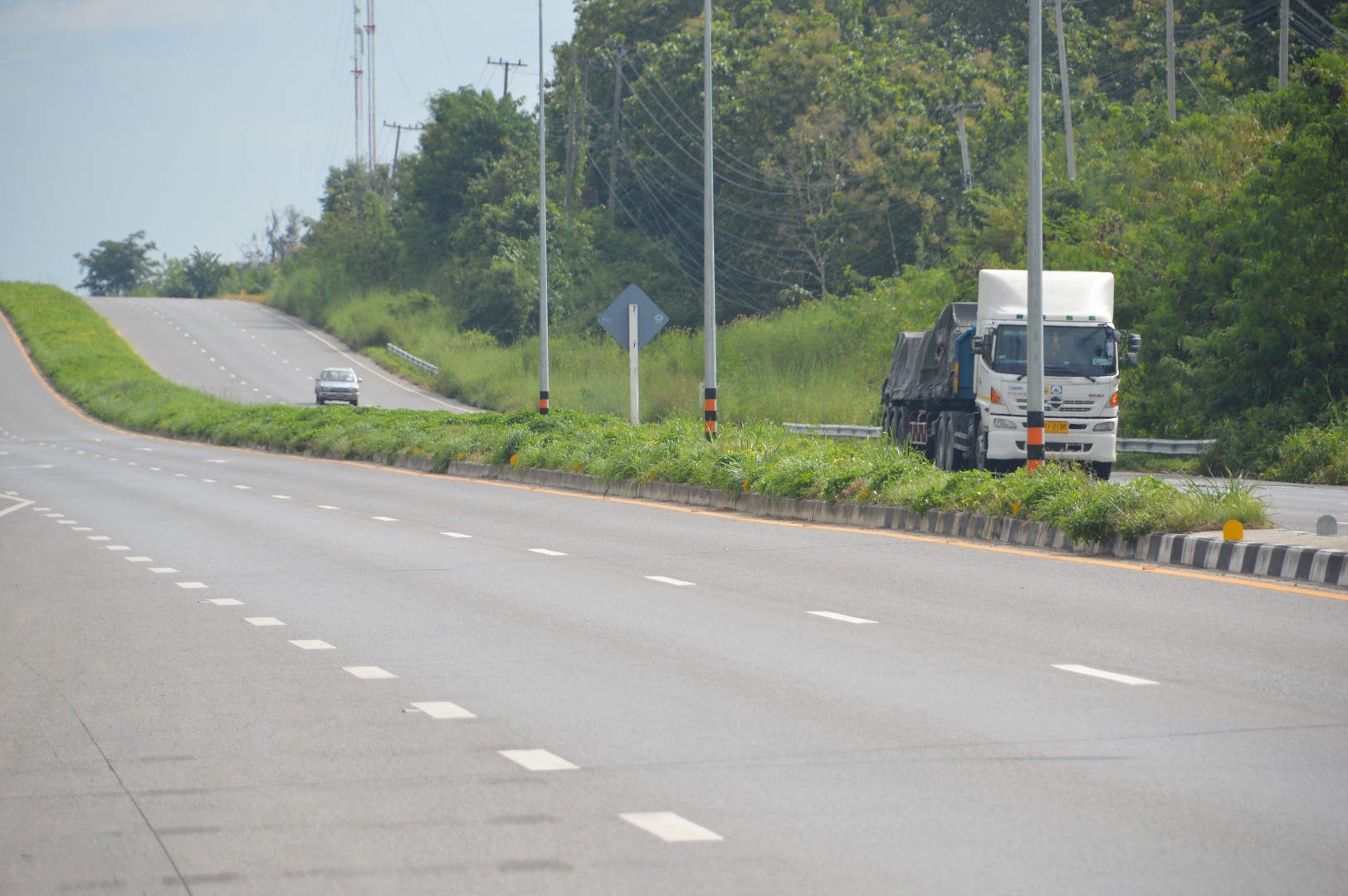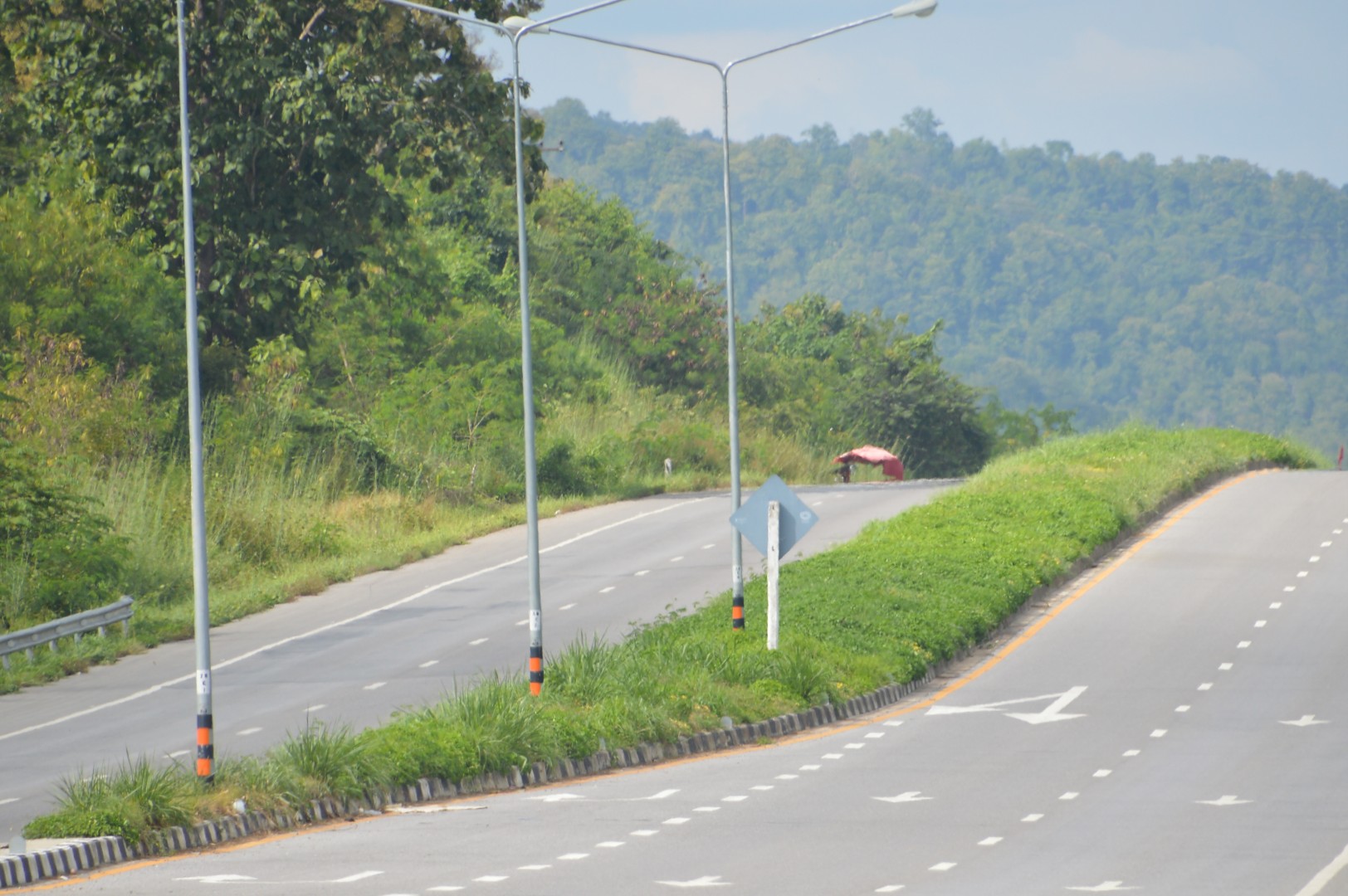I’ve seen a lot of highways in Thailand. Highway medians are sodded with manilagrass (Zoysia matrella) as a matter of course (more about the cost of that below). I’ve seen some impressive vistas of this work in past years, but for safety reasons haven’t been able to get any photos.
On a recent drive from Chiang Rai to Bangkok, I turned onto a new highway in northern Thailand and noticed the sodding work underway. I didn’t have a chance to get a photo in that construction zone, but after about 5 km I reached a section of the road where I could stop to get a picture of recently planted manilagrass sod on the median.
 A highway median in Lampang, Thailand, recently sodded with manilagrass (Zoysia matrella)
A highway median in Lampang, Thailand, recently sodded with manilagrass (Zoysia matrella)
This was impressive, because it was a 20 or 30 km stretch of road. I passed it like a zoysia chronosequence—first a median that was soil during construction, then sod being laid, then for many kilometers it was recently laid sod, and then I arrived at the inevitable consequence for all unirrigated zoysia in Thailand. Weeds.
 A few kilometers along the same highway, a slightly older stand of sodded manilagrass has been taken over by weeds.
A few kilometers along the same highway, a slightly older stand of sodded manilagrass has been taken over by weeds.
During the dry season, unirrigated and infrequently mown manilagrass gets replaced by species that can tolerate such conditions.
 A few kilometers along the same highway, a slightly older stand of sodded manilagrass has been taken over by weeds.
A few kilometers along the same highway, a slightly older stand of sodded manilagrass has been taken over by weeds.
Manilagrass survives, and in fact thrives in this climate, where it is provided with irrigation and with regular mowing. But roadsides and medians tend to get irrigation at the time of planting, and after that no irrigation and infrequent mowing.
 An irrigated highway verge in Bangkok, Thailand, sodded to manilagrass.
An irrigated highway verge in Bangkok, Thailand, sodded to manilagrass.
All grasses stop growing in drought conditions. Zoysia stops growing before bermudagrass does. And then when the soil is rewetted, it takes zoysia a long time to start growing again. These photos from side-by-side tests in the USA show the dramatic differences between species.
Top to bottom, #bermudagrass #zoysia #buffalograss, 45 days at 30% ET and negligible rain. @USGA @kmorris_NTEP pic.twitter.com/TYQZmhYZTk
— Matteo Serena (@matteoserena1) July 16, 2020
Update from our WS drought study. 30% ET, and few bermudagrasses still hold very good quality. Zoysia and buffalograss left the competition. pic.twitter.com/2MpZjK4GLN
— Matteo Serena (@matteoserena1) August 14, 2020
I can’t count the number of times someone has told me they planted zoysia because they were told it was drought tolerant and did not require irrigation. pic.twitter.com/AwJluOa61y
— Travis Shaddox (@TravisShaddox) July 11, 2020
That’s a death sentence for the manilagrass on Thailand’s highway medians. After going through one dry season, or maybe two, the manilagrass is replaced by weedy grasses, generally, that are able to tolerate the drought and can outcompete manilagrass when it does rain.
About the cost, the manilagrass sod grown in Thailand (see video below for the process) has been about 15 to 25 baht per square meter when I’ve checked in the past. That’s the cost picked up at the farm. That’s about USD $0.66 per square meter, or USD $61 per 1,000 ft2 or USD $2,670 per acre. So not a massive cost to quickly get the medians established, have immediate erosion control, and to know that there will be a rapid natural transition to species that persist in that environment.